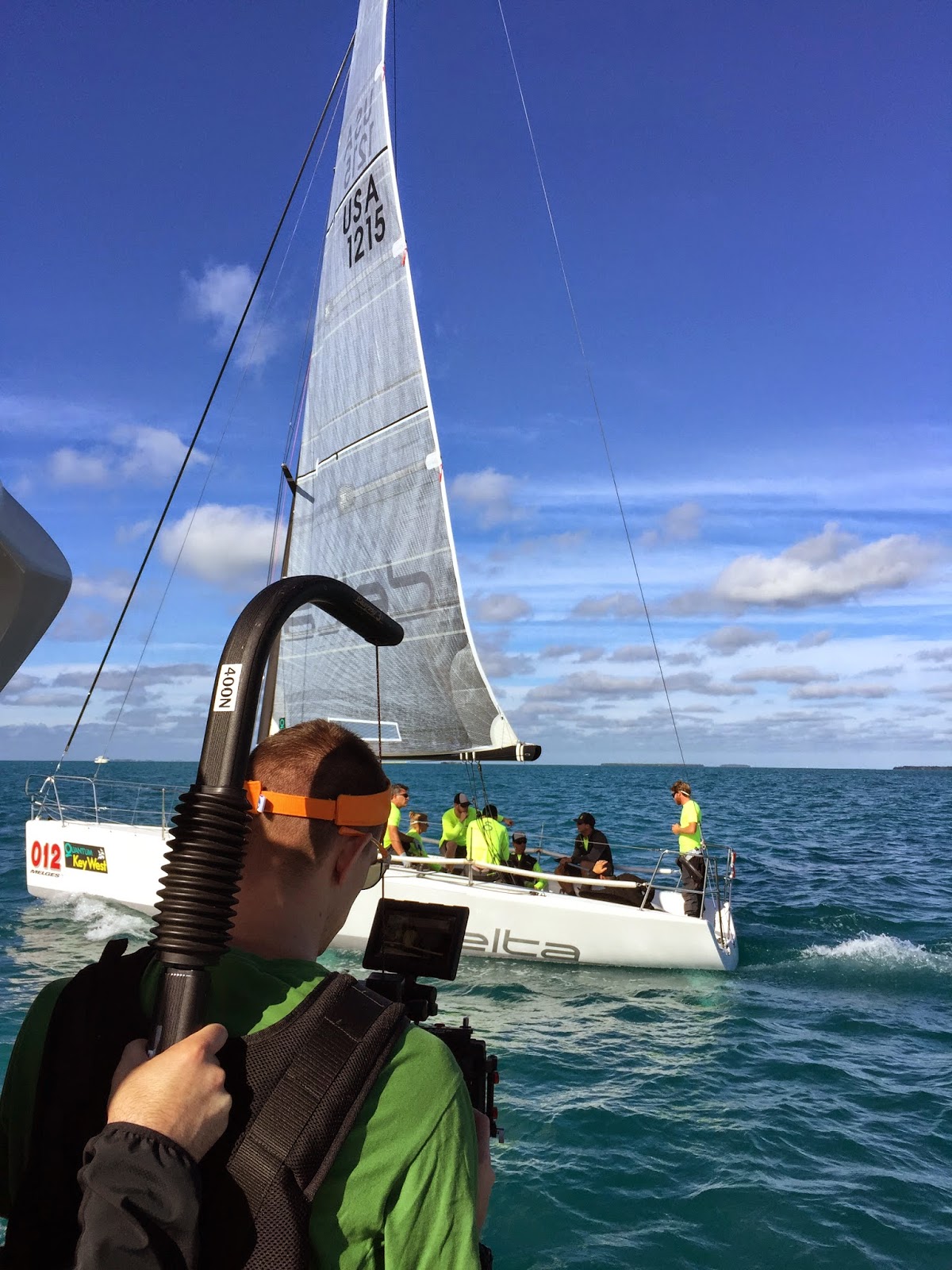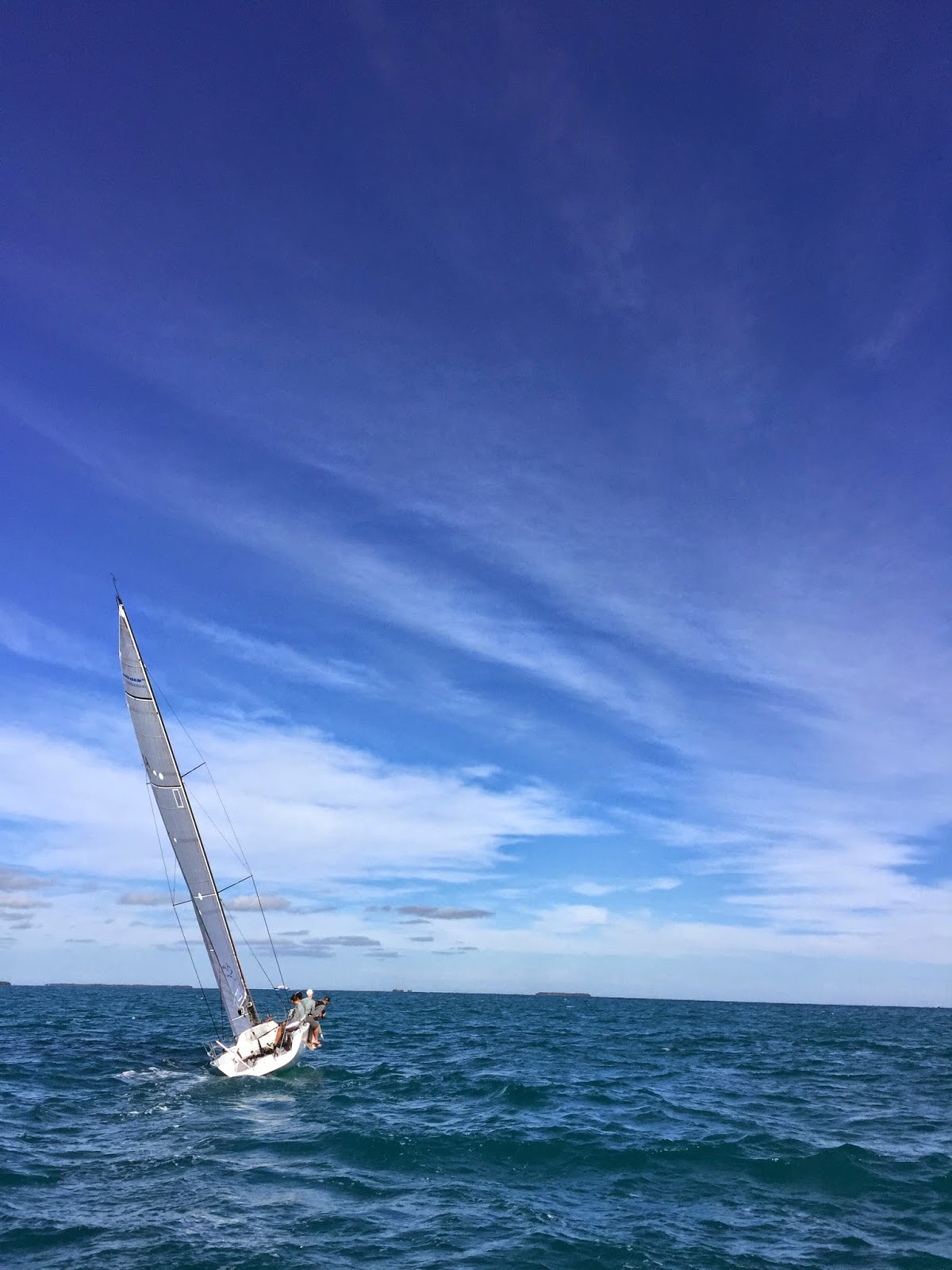As a college student I learned how to sail small boats. But last week was my first encounter with the world of championship sailboat racing. As a part of my work with Chick-fil-A, I had the chance to spend a day on the water, watching a world class sailboat racing team race in the Quantum Key West Regatta. Sailboats carved white lines in the brilliant blue-green ocean, sails snapping in the warm breeze.
If you can get past the unfairness of this being something I did for work (not my normal trip, I can assure you), there is a lot to learn from my experience.
The crew of Delta, a 32' single mast sailboat, allowed me and my camera crew to ride on their coach boat to film and ask questions of the coaching staff as the crew warmed up, then raced two courses. These pictures aren't from a brochure. They're what I snapped from my camera phone--no color adjustments or zoom required.
Yes, yes, we really need to move on from how unfair this is. :)
After the race I had the chance to interview Linda Lindquist-Bishop, a multiple-time world champion sailboat racer and a world-class leadership consultant when she's not on the water. High performance in any environment, she said, requires pressing through adversity to the benefits found on the other side. When we avoid difficult conversations, we also avoid greatness. Rather than run from a challenge, champion sailors learn to lean into it.
Her team practices this in the planning before and debrief after each race. And they practice this principle on the water--all sailors do.
See, sailboats don't just open their sails and go where the wind pushes them. Sure, running with the wind is awesome. When facing that way, these guys would add another sail (the "spinnaker") and fly across the water. But the race isn't just one way spring. They had to complete multiple laps, often turning directing into the wind.
How does a sailboat move forward with the wind blowing the wrong way? They call it tacking. By turning the boat at a sharp angle to the wind, they leverage the physics of the boat (one part reaches deep into the water below the boat) to transform the pressure on the sail into forward motion. (That's all the physics we're going to cover.) And they zig-zag across the water to get to their destination.
But tacking isn't easy. In fact, the wind pressure is so strong the boat can tip over unless the crew "hikes" by leaning as much of their body out of the boat as they can, with only the tactician and helmsman allowed to lift their head up to see what's going on. ("The head weighs 10 lbs," I was told, "and every pound counts.")
Have the winds of life changed on you? Don't let it push you the wrong direction. Get a team around you--every pound counts--and lean into it. You may have to zig-zag, but you can get there. You can still win the race.







